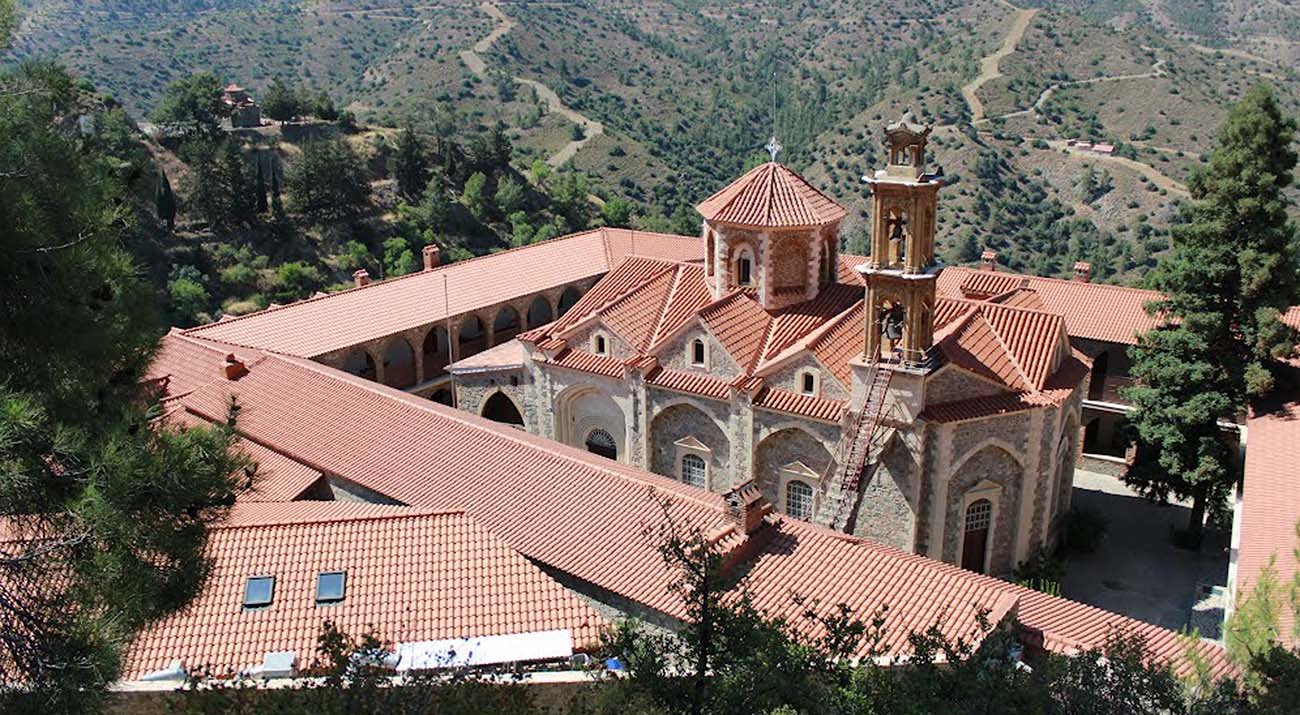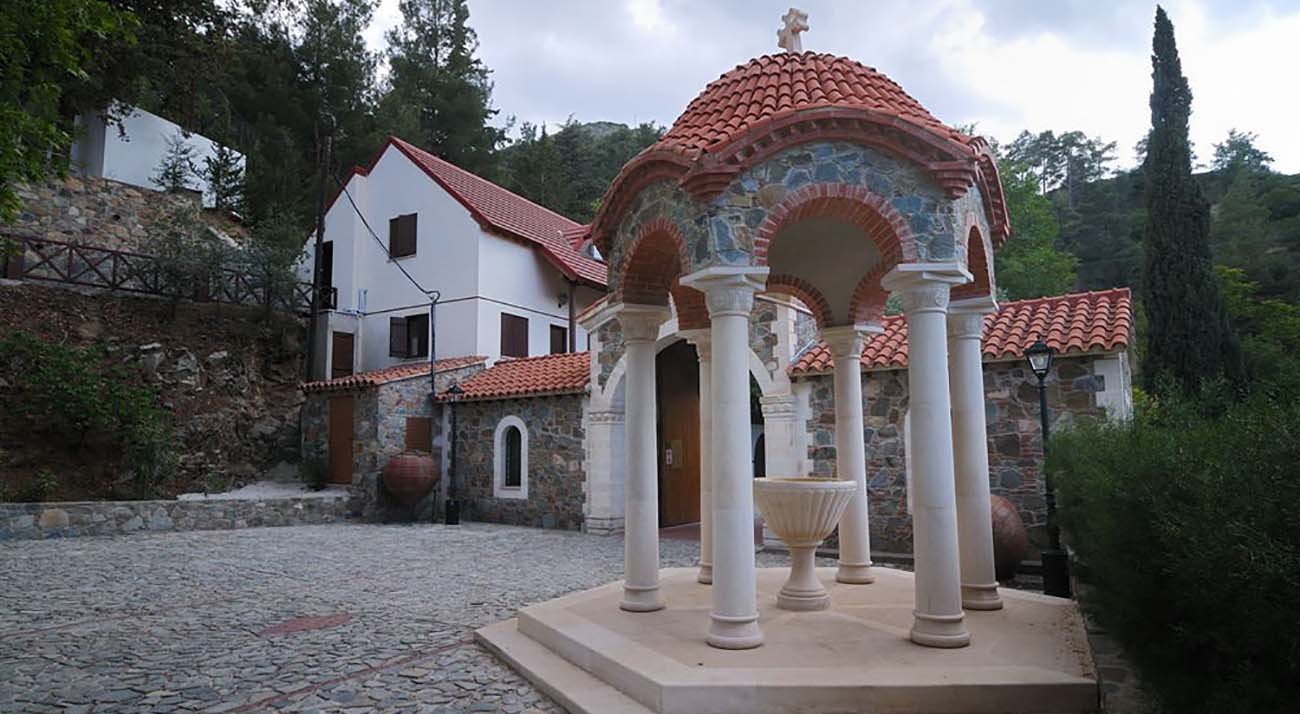
The Makheras' monastery was built in 1148 AD by two monks who came across an icon of the Virgin Mary in a cave nearby. Visitors were not really welcome till recently; Orthodox Christian males were just about tolerated by the monks who live there in seclusion, provided they were suitably dressed. Women may not enter the building. Now, the Monastery may accept male visitors staying overnight without cost. You may not get a room and will have to sleep in a cloister. You will find the draft of wind rather sharp and cutting, in whose awe the Monastery was named ‘The Sword’ or Makheras. You are expected to either give the monks a donation, or buy their produce, like honey, wines and liqueurs.
The local name of the Monastery is Panayia tou Makhera. It houses the icon, painted by Luke the Apostle, which is specifically named Our Lady of the Sign or ‘Ikona Bozhey Materi’ in the Slavonic dialect. This term is reserved for a particular type of icon of the Theotokos (Virgin Mary). The icon depicts the Theotokos during the Annunciation at the moment of saying, "May it be done to me according to your word."(Luke 1:38). The icon may be worshipped from afar by women desirous of finding a soul mate, a partner or a husband and live ‘happily ever after’.
- The term Virgin of the Sign or Our Lady of the Sign is a reference to the prophecy of Isaiah 7:14: "Therefore the Lord himself shall give you a sign; Behold, a virgin shall conceive, and bear a son, and shall call his name Immanuel". Such an image is often placed in the apse of the sanctuary of an Orthodox church above the altar. VIP Tours include this site in their religious tours.
- The depiction of the Virgin Mary facing the viewer directly, depicted either full length or half, with her hands upraised in prayer (orans) and with the image of the Child Jesus depicted within a round aureole upon her breast is of very ancient origin in Christian art.
- The image of the Christ child represents him at the moment of his conception in the womb of the Virgin. He is depicted not as a foetus, but rather vested in divine robes, and often holding a scroll, symbolic of his role as teacher. Another reason for inclusion in tours in Cyprus.
- Sometimes his robes are gold or white, symbolising divine glory; sometimes they are blue and red, symbolising the two natures of Christ. Such signs lead to miraculous health recovery.
- His face is depicted as that of an old man, indicating the Christian teaching that he was at one and the same time both a fully human infant and fully the eternal God, one of the Trinity. His right hand is raised in blessing, Jesus Christ’s miraculous blessing for those who have faith.
- A number of such icons were found in Russia in the 11th and 12th centuries.
- At 3,000’ above sea level the Monastery is 2,000’ above Nicosia and offers a grand view thereof.
- Hiking to the monastery is extremely tiring, with a number of ridges which slow you down considerably. If not suitably shod, you could pick up blisters.
- In 1957, Gregorious Afxentiou, second in command of the Cyprus Freedom Group EOKA [Ethnikí Orgánosis Kipriakoú Agónos (National Organisation of Cypriot Struggle)] and considered a hero among the Greek Cypriots, was burned alive by the British in his hideout next to the Monastery. Only British visitors walk across to this site.
- Call for reservations at (011) 357-02-312899
Private car with driver for 3 hours
120 euro
Additional hour
25 euro
Cost based on 2-4 Person
Private minibus with driver for 3 hours
220 euro
Additional hour
35 euro
Cost based on 5-8 Person





